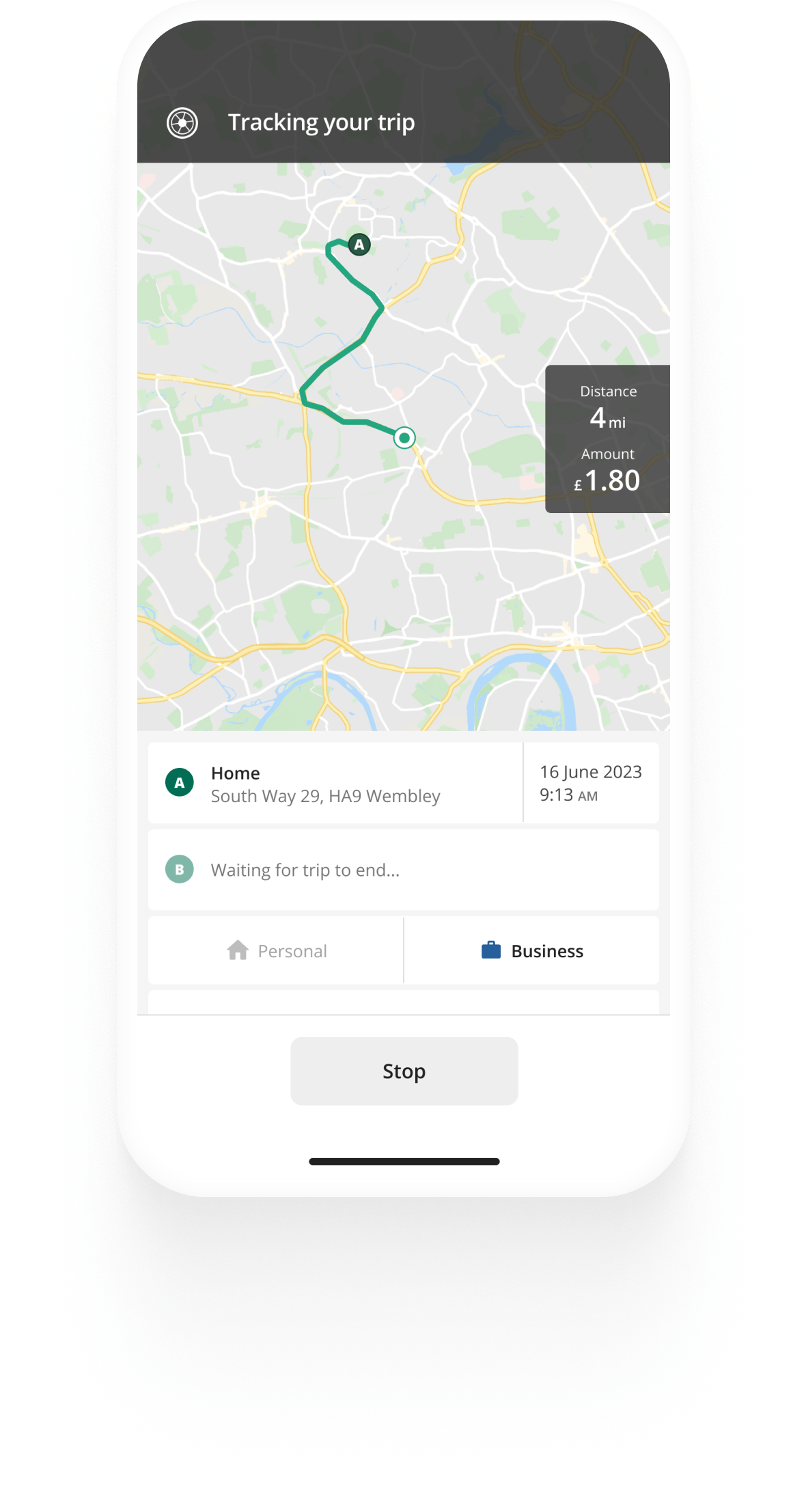Track mileage automatically
Get startedSelf-employed mileage allowance records
As a self-employed taxpayer, you are required to keep accurate mileage allowance records of all your self-employed car expenses as proof for your tax return if you wish to receive mileage allowance relief.
Are you wondering if you did your mileage log book properly? With Driversnote as your mile tracking app your trips are automatically logged with all the needed information, just the way HMRC likes it.
Self-employed mileage log records for the actual expenses method
Your mileage log should contain all your business mileage, including the date, start and end addresses - including postcode - and the total distance travelled for each trip. If you use your vehicle for both business and private journeys, record all mileage as you will need to calculate the percentage of business mileage and deduct that percentage from your car expenses.
The self-employed car expenses you should record and keep receipts of:
- Vehicle insurance
- Repairs
- Servicing
- Parking
- License fees


Mileage tracking made easy
Trusted by millions of drivers
Automate your mileage log Automate your mileage log

Automatic mileage tracking and HMRC-compliant reporting.
Get started for free Get started for freeSelf-employed mileage log records for the simplified expenses method
If you use the simplified mileage expenses method, you will only need to log your business mileage, including the following details:
- The date of the trip
- The start and end address of each trip, including postcode
- The distance travelled
How to keep mileage records for your self-employed car expenses
You are required to keep your records for five years from the submission deadline of the applicable tax year in case HMRC audits your business.
You can track your business mileage manually or automatically. Manually recording miles (including dates and addresses) can be done through a logbook or a spreadsheet. The medium doesn’t matter as long as it contains the correct information as described above. Get our HMRC-compliant mileage log book template.
Another option is an automatic app tracking service that will log all your business trips for you - it will save you time and record accurate information about your driving. Best of all, during those really busy days, you don't have to spend time writing down your trips as your phone can do it for you.
Driversnote tracks your mileage automatically, working both on Android & iOS, but there are others out there that also produce HMRC-compliant reports of your business mileage, and we encourage you to have a look around and pick the solution that fits you best.
How to claim self-employed car expenses on Self Assessment
To claim your actual vehicle costs on Self Assessment, you must:
- Go through your mileage records and add up all vehicle expenses.
- Add all your vehicle expenses to all other allowable expenses.
- Include the total amount on your Self Assessment tax return.
Alternatively, to claim vehicle costs using the simplified expenses method, you must:
- Keep a record of the business mileage you have travelled throughout the tax year.
- Multiply business miles travelled with the simplified expenses rate for the whole tax year.
- Include the amount in your total expenses on your Self Assessment tax return.
You don’t need to submit your records for either method when filing your tax return. However, you should keep them for five years as proof that the information you have declared is correct.
FAQ

Tired of logging mileage by hand?
Effortless. HMRC-compliant. Liberating.
HMRC Mileage Guide
- For self-employed
- For employees
- HMRC mileage claim in 5 steps
- Self-employed mileage allowance records
- Car allowance for employees
- Salary sacrifice car scheme
- Mileage Allowance Relief
- HMRC mileage rate 2022
- HMRC mileage rates 2021